
Early yasurime bori menpo
Russet iron, one-piece construction with decorative grooves.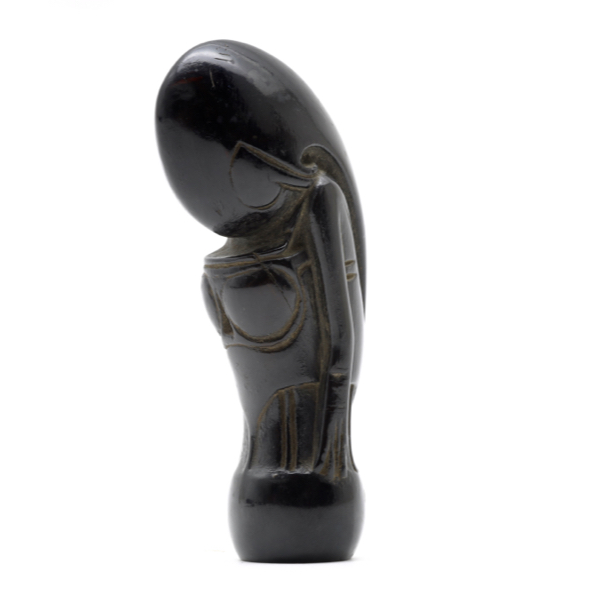
Hulu Radon / Hulu Balu Mekabun
Indonesian name for a keris hilt depicting a veiled woman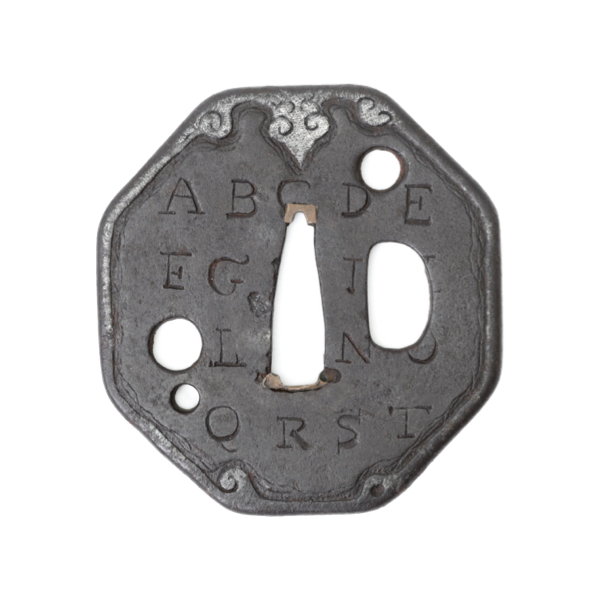
Early tsuba with alphabet
Curious early tsuba with the beginning of the Western alphabet inscribed into it.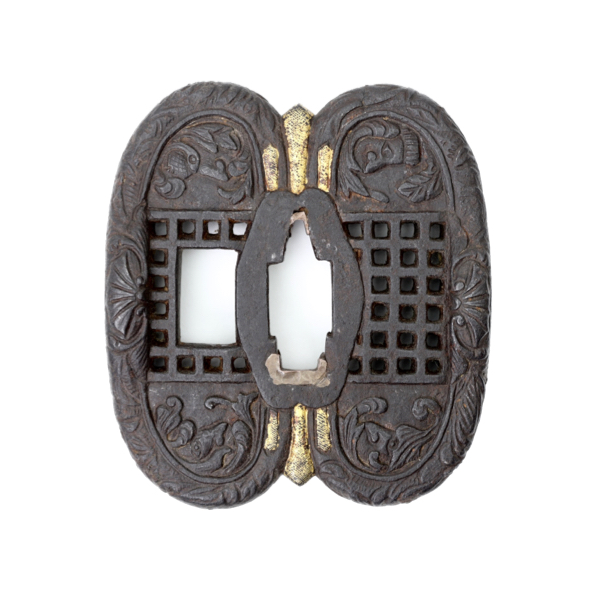
Curious lobed sword guard
Modeled after a smallsword guard, with carvings of Western figures.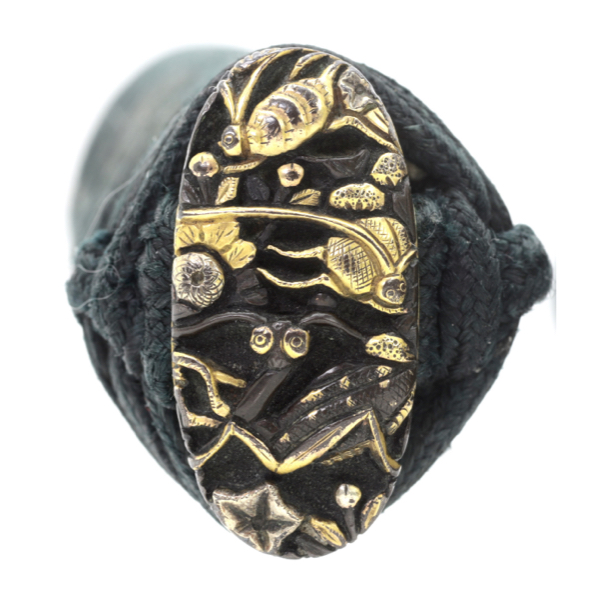
Mino-bori (美濃彫)
Language: Japanese
Source: Michitatsu's Sōken Kishō of 1781
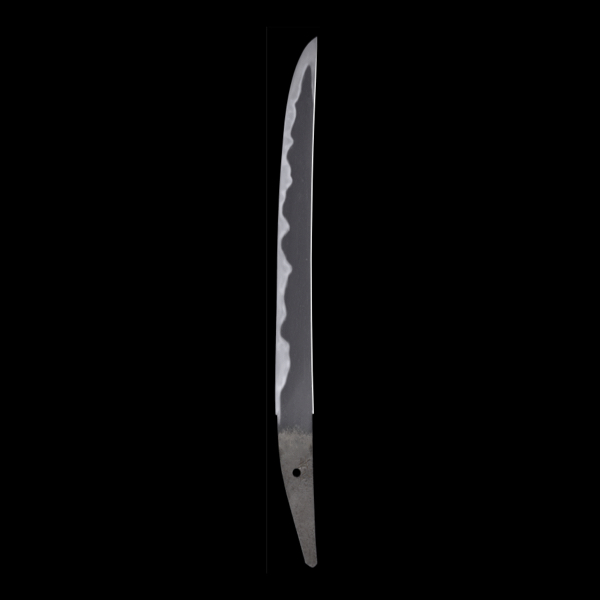
Muramasa masterpiece tantō
A masterpiece by the "cursed" smith, active in the early 16th century.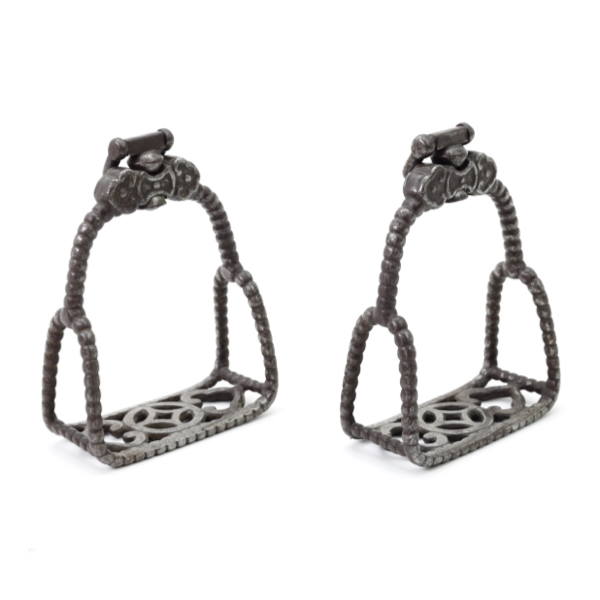
Ming period stirrups
Forged iron, swiveled stirrups with an entirely beaded frame and openwork platforms.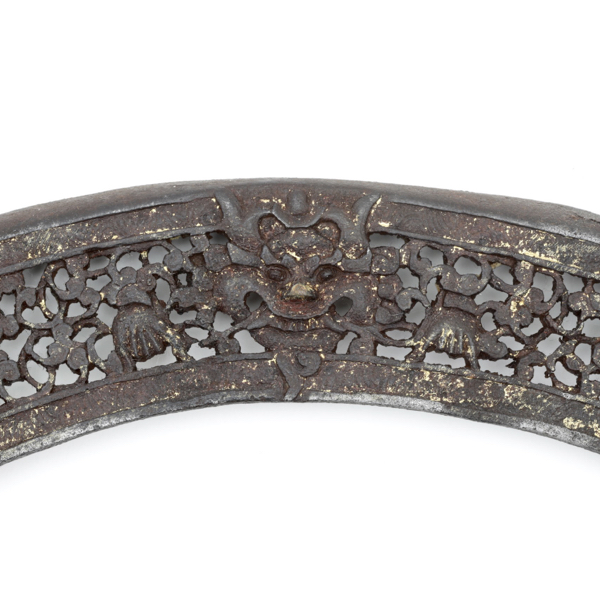
Pierced iron saddle bows
This kind of fine work is typical for Tibetan work of the 15th-16th centuries.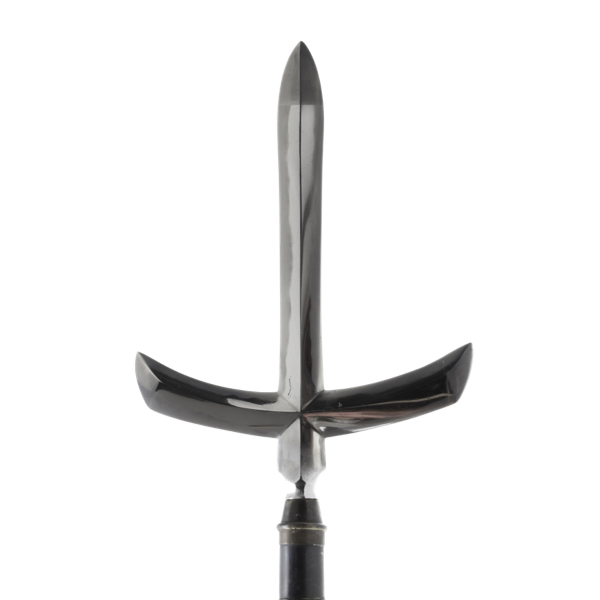
Jumonji yari by Kanabō Masazane
Made in the 16th century, for the warrior monks of the Hozo-in temple in Nara.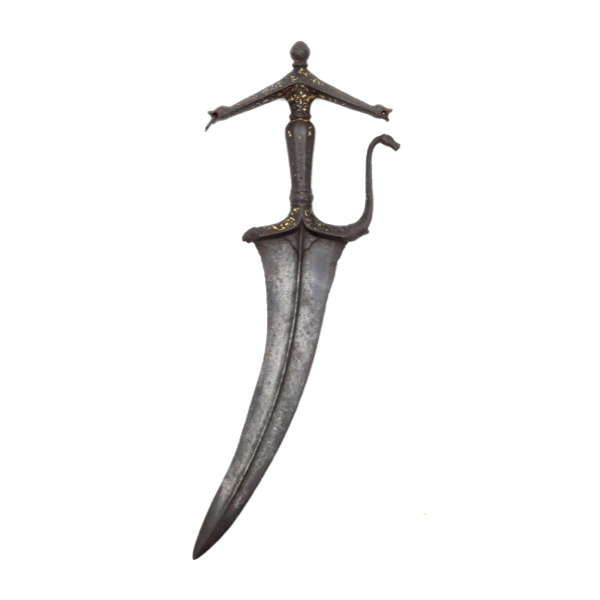
Early Mughal kapwah
An over 400-year-old Mughal court dagger. Once lavishly decorated with gold.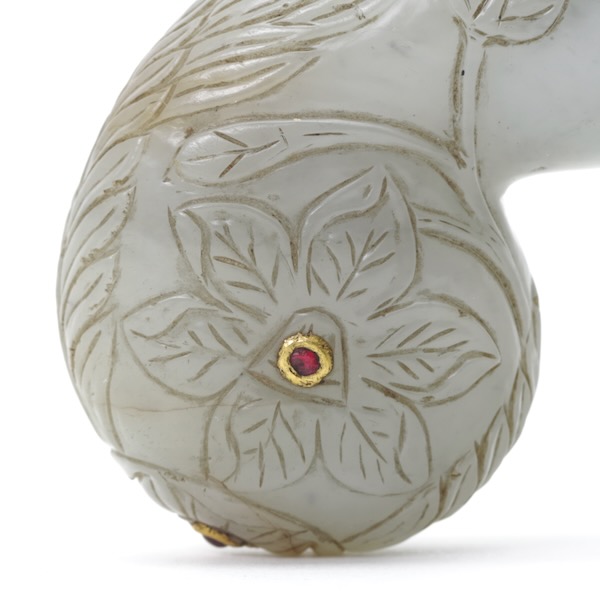
kundan (कुंदन)
It literally means "gold" but is also a technique for setting gems into brittle surfaces.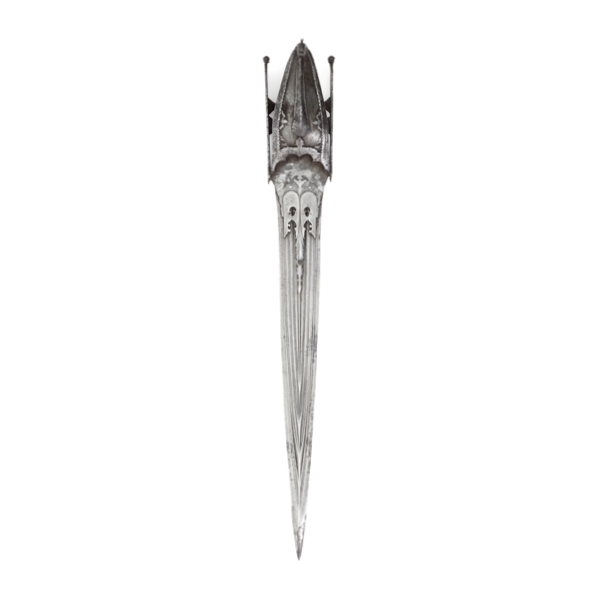
Vijayanagara hooded katar
With crisp, extremely very well-preserved wootz blade.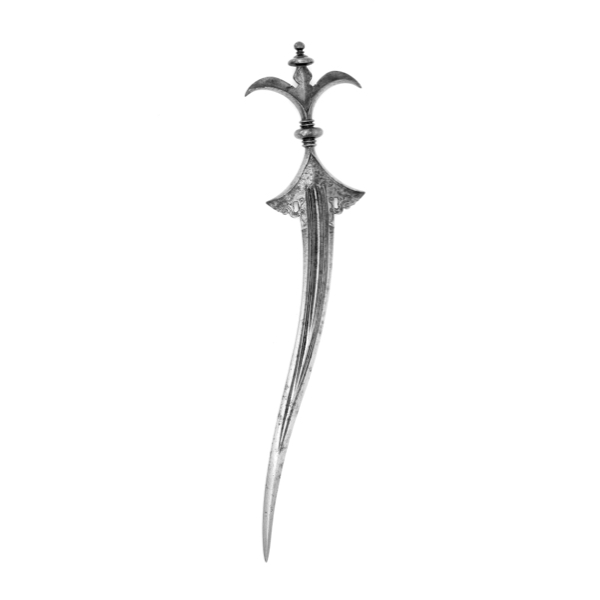
Slender chilanum dagger
Of elegant form with very crisp blade.
16th century left-hand dagger
Nice European parrying dagger, possibly German or Swiss.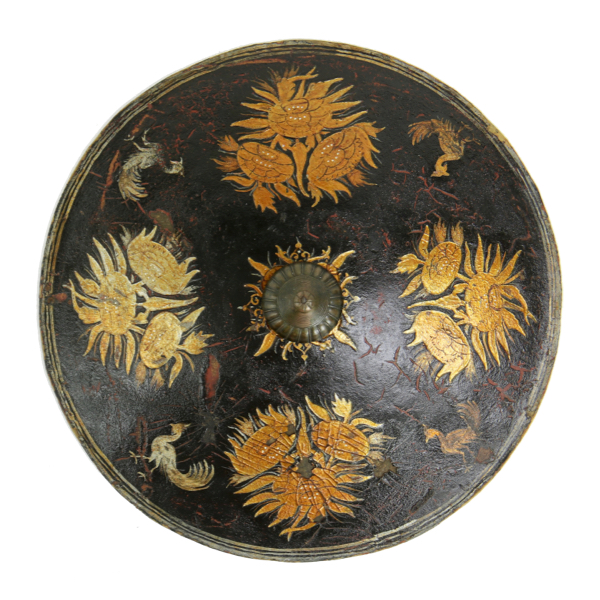
Early Indian shield
Made of thick lacquered hide, with a single brass boss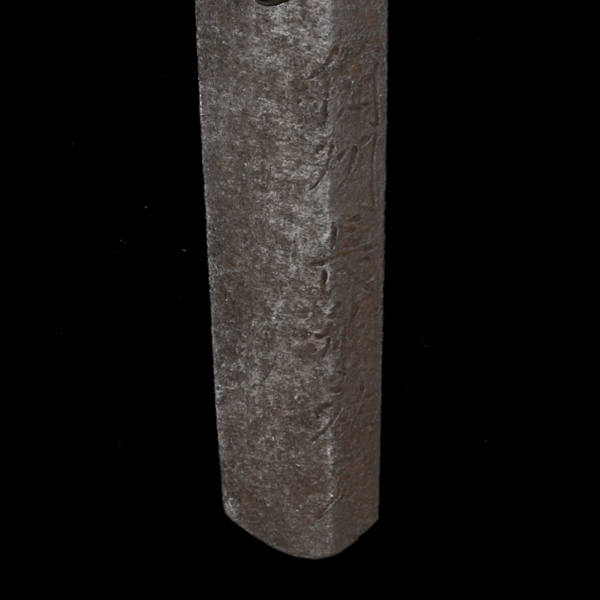
Bizen Sukesada
A group of sword makers in Bizen, Japan, active in the Muromachi period.
Yosōzaemon jo Sukesada (与三左衛門尉祐定)
A Japanese swordsmith from Osafune, Bizen, who lived from 1466-1542.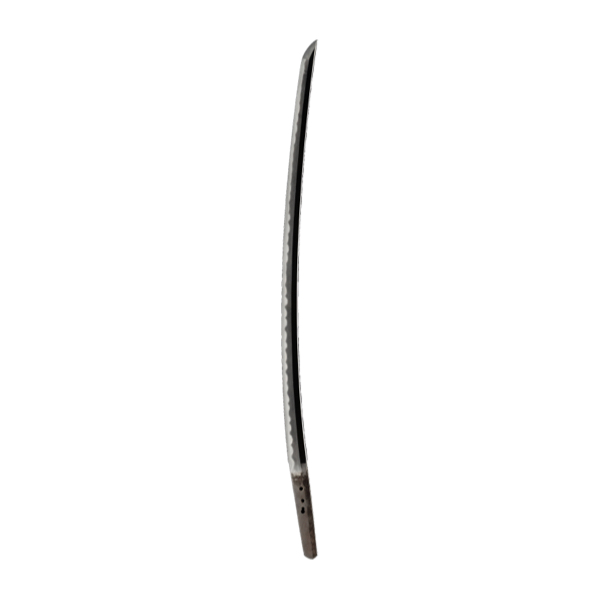
Sukesada uchigatana made August 1523
With a sayagaki by Honma sensei attributing it to Yosozaemon.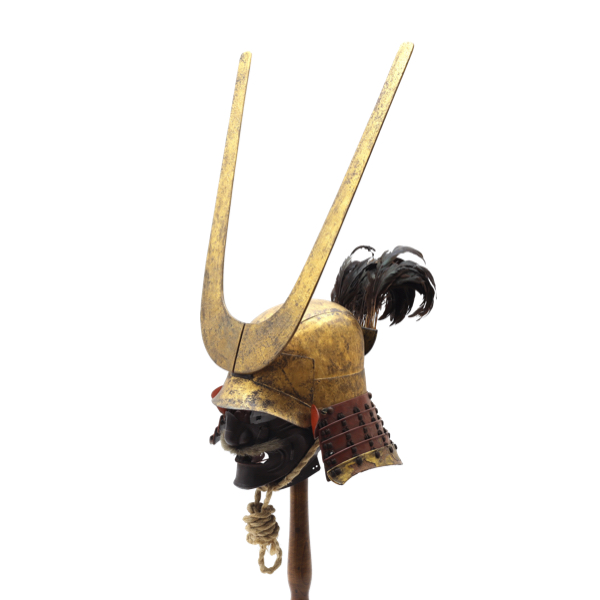
Golden kabuto with iron menpo
A striking battle helmet from the Momoyama period of 1568-1600 A.D.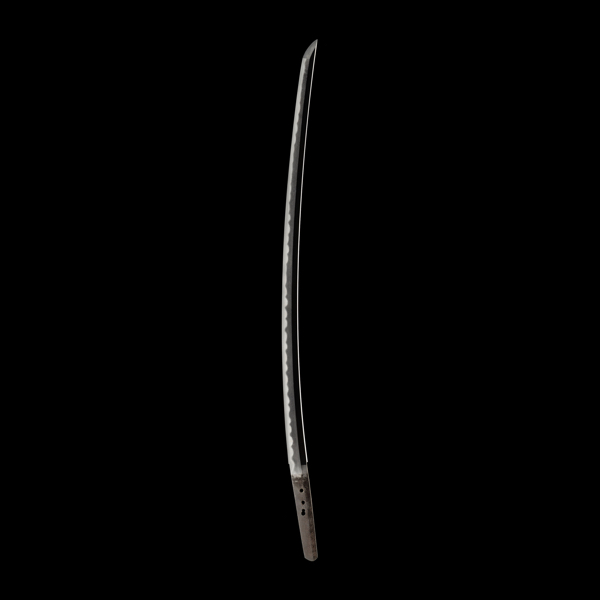
Uchigatana (打刀)
Japanese word for a single-handed curved sword, the predecessor of the katana.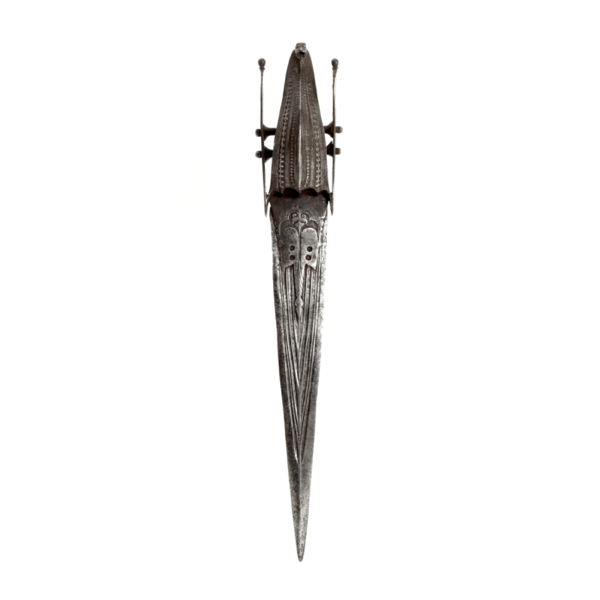
Vijayanagara katar
A 16th hooded katar with the wide, ribbed blade that is characteristic for this period.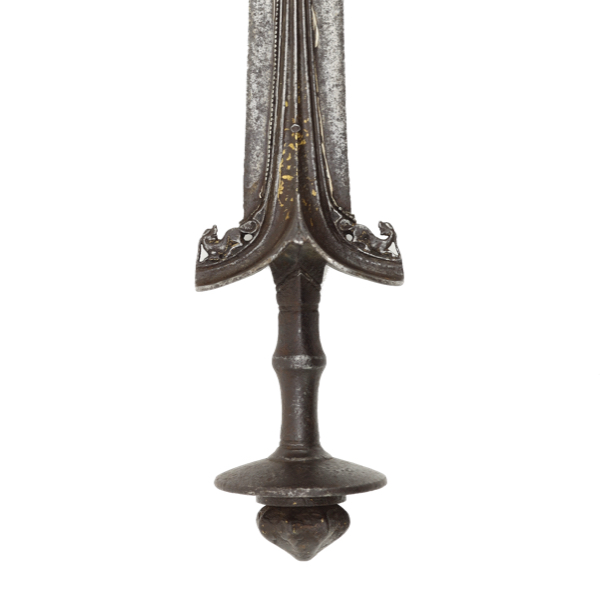
South Indian pattissa
An early example, late Vijayanagara empire, with a fine wootz spatulate blade.
